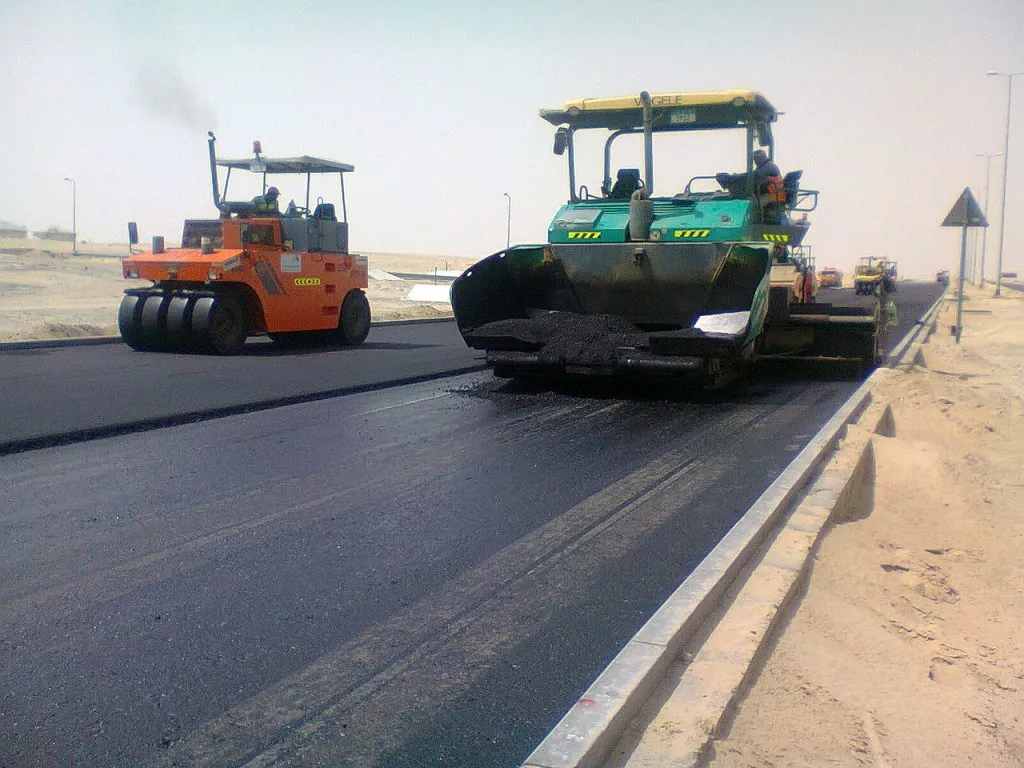Hello, curious traveler! Welcome to our in-depth guide to the fascinating world of road construction. We’ll unravel the mysteries of this complex field, from the various types of roads and their purposes to the crucial importance of safety and environmental considerations. Let’s pave the way to knowledge!
Road Construction Wiki: Let’s Pave the Way!
What is Road Construction?
Road construction is the intricate process of transforming bare land into safe and efficient pathways for vehicles and pedestrians. It’s more than just laying down pavement; it involves meticulous planning, design, construction, and ongoing maintenance to ensure our roads are durable, functional, and safe.
Designing Roads: More than Just Lines on a Map
Before construction begins, engineers painstakingly plan every aspect of the road, from curves and lanes to lighting and pedestrian crossings. Safety is paramount, so designs prioritize visibility, traffic flow, and pedestrian safety. Increasingly, environmental concerns are integrated into road design, incorporating bike lanes, walkways, and eco-friendly materials whenever possible.
Keeping Our Roads in Tip-Top Shape: The Importance of Maintenance
Once a road is built, it requires regular maintenance to ensure its longevity and safety. This includes repairing potholes, resurfacing worn-out sections, and maintaining drainage systems. Think of it as preventative care for roads, ensuring they remain smooth, safe, and functional for years to come.
Road Construction Gets Techy: Innovations for the Future
Advancements in technology are revolutionizing road construction. We’re seeing the emergence of super-strong concrete reinforced with fibers, self-healing asphalt, and smart traffic systems that adapt to real-time conditions. These innovations are making our roads more durable, efficient, and sustainable.
Roads: Connecting Communities, Driving Economies
Roads are more than just paths; they are the arteries of our communities, connecting us to jobs, schools, hospitals, and each other. Well-maintained road networks are essential for economic growth, facilitating the transportation of goods and services and enabling businesses to thrive.
What are the Different Types of Roads?
Roads are designed for specific purposes and traffic capacities, using different materials and layouts to ensure smooth and safe transportation.
Road Capacity: From Neighborhood Streets to Bustling Highways
Road capacity refers to the volume of traffic a road is built to handle.
- Lower Capacity Roads: These include residential streets, avenues, and alleys designed for local access within neighborhoods and communities.
- Higher Capacity Roads: Highways, expressways, and freeways are designed for high-speed, long-distance travel, connecting major cities and regions. They feature multiple lanes and controlled access points to ensure smooth traffic flow.
Road Purpose: Mobility vs. Community Building
Roads serve different purposes beyond simply connecting two points.
- Mobility Roads: These prioritize efficiency and speed, facilitating the movement of vehicles quickly and efficiently.
- “Build a Place” Roads: These roads are designed to foster a sense of community, often incorporating landscaping, pedestrian-friendly features, and access to local businesses.
Road Materials: Choosing the Right Fit
The choice of road material impacts its durability, cost, and overall performance.
- Concrete Roads: Renowned for their strength and longevity, concrete roads are often used for highways, bridges, and other high-traffic areas.
- Asphalt Roads: Asphalt offers a smoother ride and is generally more affordable than concrete. It’s also more flexible, reducing the likelihood of cracking.
- Other Materials: Gravel roads are common in rural areas, while brick roads often add a touch of historical charm to older neighborhoods.
Distinctive Road Types: A Closer Look
Beyond basic categories, we encounter a variety of specialized roads designed for specific needs:
- Single Carriageway Roads: These standard two-lane roads have one lane for each direction of traffic.
- Dual Carriageway Roads: Featuring a median strip to separate opposing lanes of traffic, dual carriageways improve safety and reduce the risk of head-on collisions.
- Highway Roads: Connecting major cities and regions, highways often have controlled access points (on-ramps and off-ramps) to maintain a consistent flow of traffic.
- Byways: Offering scenic routes that often follow historic roads, byways provide a glimpse into the past and showcase cultural landmarks.
- Roundabouts: Replacing traditional intersections, roundabouts improve traffic flow and reduce the potential for accidents by facilitating a continuous, circular flow of vehicles.
- Woonerfs (Living Streets): Prioritizing pedestrians and cyclists, woonerfs create shared spaces with traffic-calming measures and pedestrian-friendly design elements.
As technology advances and our transportation needs evolve, we can expect to see even more innovation in road design. From incorporating autonomous vehicle infrastructure to developing sustainable materials, the future of roads is full of exciting possibilities. Understanding the different types of roads we have today prepares us for navigating the roads of tomorrow.
Why is Road Safety Crucial in Construction?
Road construction zones present unique safety challenges due to the presence of heavy equipment, workers, and altered traffic flow. Implementing comprehensive safety measures is paramount to preventing accidents and ensuring the well-being of everyone involved.
High Visibility and Clear Signage: Essential for Safety
Construction zones require clear and visible signage to direct traffic, warn of potential hazards, and protect both workers and drivers. High-visibility vests, cones, barrels, and other safety equipment help workers remain visible to oncoming traffic.
Training and Communication: Building a Culture of Safety
Thorough training is crucial for all construction personnel to ensure they understand safety protocols, traffic control measures, and emergency procedures. Effective communication between workers, drivers, and pedestrians is also vital for maintaining a safe work zone.
Technology to the Rescue: Enhancing Safety with Innovation
Technological advancements are playing an increasingly important role in construction site safety. Drones provide aerial surveillance, monitoring traffic flow and identifying potential hazards. Sensors can detect unsafe conditions, alerting workers and drivers to potential risks.
A Shared Responsibility: Going Beyond the Minimum
Road construction safety is a shared responsibility among construction companies, workers, and the public. Construction companies must prioritize safety by enforcing strict protocols, providing proper training, and investing in safety equipment. Drivers must exercise caution in construction zones by reducing speed, paying attention to signage, and being aware of workers and equipment. By working together and prioritizing safety, we can create a safer environment for everyone.
How Does Road Construction Impact the Environment?
While road construction is essential for economic growth and connectivity, it’s important to acknowledge and mitigate its potential environmental impacts.
Air Quality: Minimizing Emissions
Construction equipment emits pollutants that can degrade air quality, impacting human health and the environment. Dust, nitrogen oxides (NOx), and other harmful substances are released during construction activities. Choosing cleaner-burning equipment, implementing dust control measures, and optimizing construction practices can help minimize air pollution.
Noise Pollution: Protecting Our Ears and Well-being
The constant noise from heavy machinery and construction activities can be disruptive to nearby residents and wildlife. Construction noise can cause stress, sleep disturbances, and even hearing problems with prolonged exposure. Implementing noise control measures, such as sound barriers and construction scheduling, can lessen the impact.
Water Quality: Preventing Contamination
Runoff from construction sites can carry pollutants like sediment, chemicals, and debris into nearby waterways, harming aquatic life and potentially contaminating drinking water sources. Implementing erosion control measures, properly managing stormwater runoff, and using environmentally friendly construction materials can help protect water quality.
Minimizing the Impact: Building a Better Way
Several strategies can mitigate the environmental impact of road construction:
- Cleaner Machines, Cleaner Air: Utilizing construction equipment with lower emissions, such as electric or hybrid vehicles, can significantly reduce air pollution.
- Taming the Dust: Simple measures like spraying water on construction sites can prevent dust clouds from forming and spreading.
- Managing Runoff: Creating barriers and channels to control the flow of rainwater on construction sites can prevent pollutants from entering waterways.
- Green Solutions: Planting trees and shrubs along roadsides not only absorbs noise and air pollution but also helps prevent erosion and provides habitats for wildlife.
- Recycling for the Road: Utilizing recycled materials, such as crushed concrete or asphalt from old roads, reduces the need to extract virgin resources.
Sustainable Road Construction: Building for the Future
Adopting sustainable practices in road construction is essential for protecting the environment for future generations.
- Environmentally Friendly Materials: Opting for recycled and renewable materials and exploring innovative options like permeable pavement (which allows water to seep through) minimizes the environmental footprint.
- Energy-Efficient Designs: Planning roads that are shorter, straighter, and require less lighting reduces energy consumption and emissions.
- Green Infrastructure: Incorporating green spaces, like rain gardens and bioswales (vegetated ditches that filter runoff), helps manage stormwater and enhances the aesthetic appeal of roads.
- Getting People Moving – Sustainably: Encouraging public transportation, walking, and biking reduces the number of cars on the road, easing congestion and lowering emissions.
By embracing these forward-thinking construction practices, we can build the roads we need while safeguarding the environment. It’s about finding that balance between progress and preservation. If you’re interested in learning about the steps to construct a road, we have a comprehensive guide that will walk you through the entire process. You can also read about the step-by-step road construction process and see construction project profile examples to gain a deeper understanding of the intricacies involved.
- Modern Mexican Interior Design: Create a Vibrant Home - September 12, 2025
- Discover Zimbabwe Traditional Interior Design: A Modern Guide - September 8, 2025
- Master Interior Design Online: Fast Track Your Career - September 5, 2025










